Danny Cruz has got his Louisville City side humming.
The former MLS player with Houston, DC, United and Philadelphia has brought an attacking brand of football to Louisville City that has his team at the top of the table.
The month of August saw Louisville City win matches against Charleston Battery, New Mexico United and Sacramento Republic, all teams that rank towards the top of their respective conferences.
Heading into their final six games of the season, they own a three-point lead over Charleston with two matches in hand.
This tactical analysis examines the core principles at play for this USL Championship-leading side.
We’ll look first at this uptempo, vertical attack and show how they unbalance opponents in possession.
We’ll finish the scout report with a look at their out-of-possession tactics, notably how they execute their 5-2-3 press.
Louisville City Verticality & Up-Tempo Attacking
Tempo and verticality are core principles of this Louisville city attack.
They typically set up in a 3-4-3, very much in this style of Rúben Amorim’s Sporting.
If they can play into the front three and hurt the opponent, they’ll take it knowing that they have three tightly connected players high up the pitch.
The centre-backs find that line-breaking pass so well.
Between the three centre-backs at the base and the alternating heights of the two pivots, LouCity has the depth to draw opponents towards the ball and the height to play into the forward line.
The height of the forwards also allows them to create space between the lines, allowing for checks into midfield.
With the pivots playing supporting roles and the wingbacks offering width, the Louisville City attack’s prominent features are its depth and height.
In the 10-point goal fest against NCFC, one of the best early chances came from a line-breaking pass from the centre-back, Arturo Ordonez, into Aiden McFadden, the right-wingback who had moved centrally.
McFadden was able to play his right-forward, Jansen Wilson, behind the backline, who then played an early cross into the heart of the box for Wilson Harris.
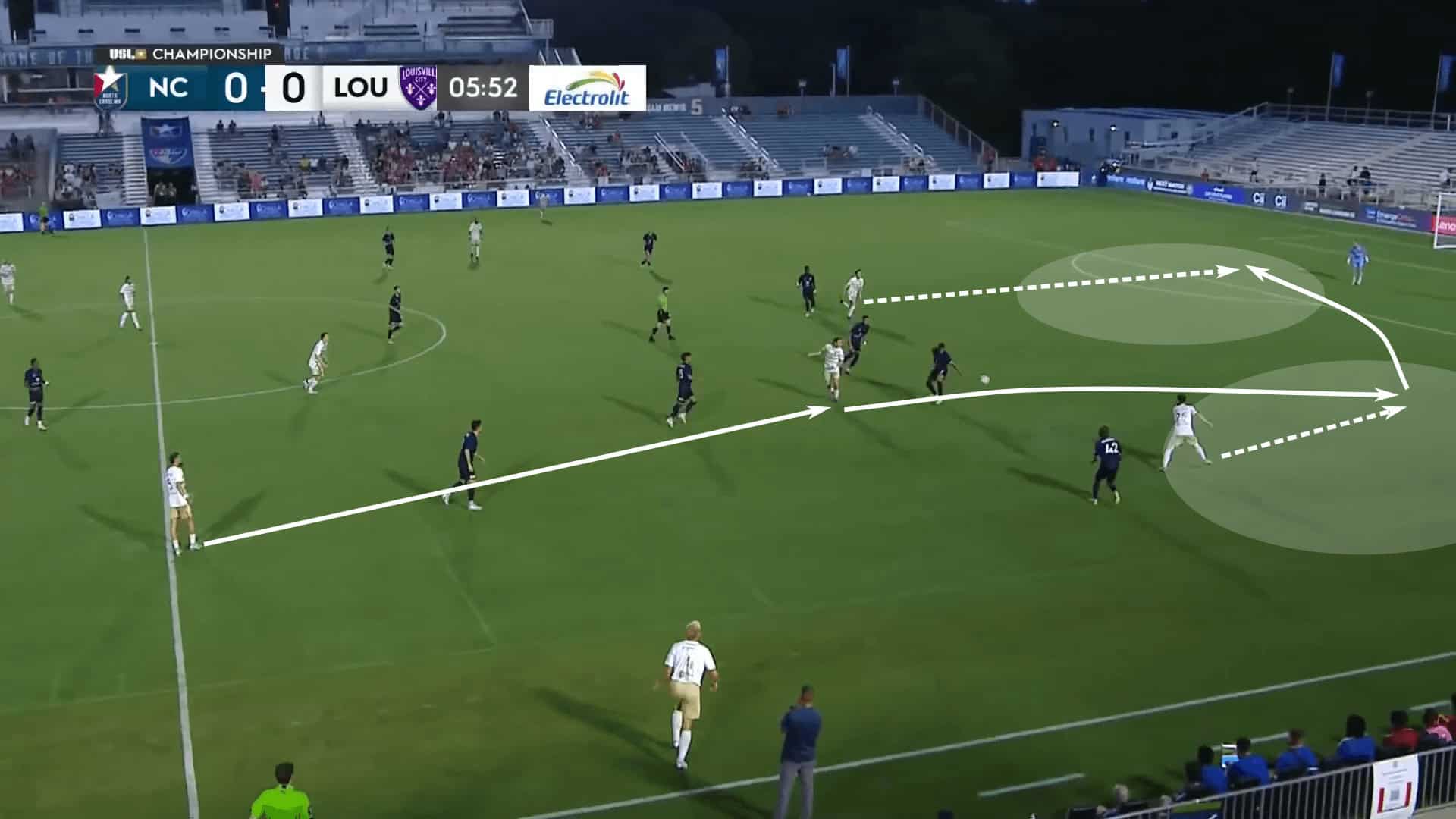
While they couldn’t capitalize on this early opportunity, it was a warning shot.
Goals were on the day’s agenda.
It’s not only the ability to play into the forward line that separates Louisville City.
There’s also the quality that USL Championship teams have to account for.
In a battle between the top two teams in the Eastern Conference, a beautiful pass from Harris into Wilson saw the forward spin his defender and get an opportunity at goal.
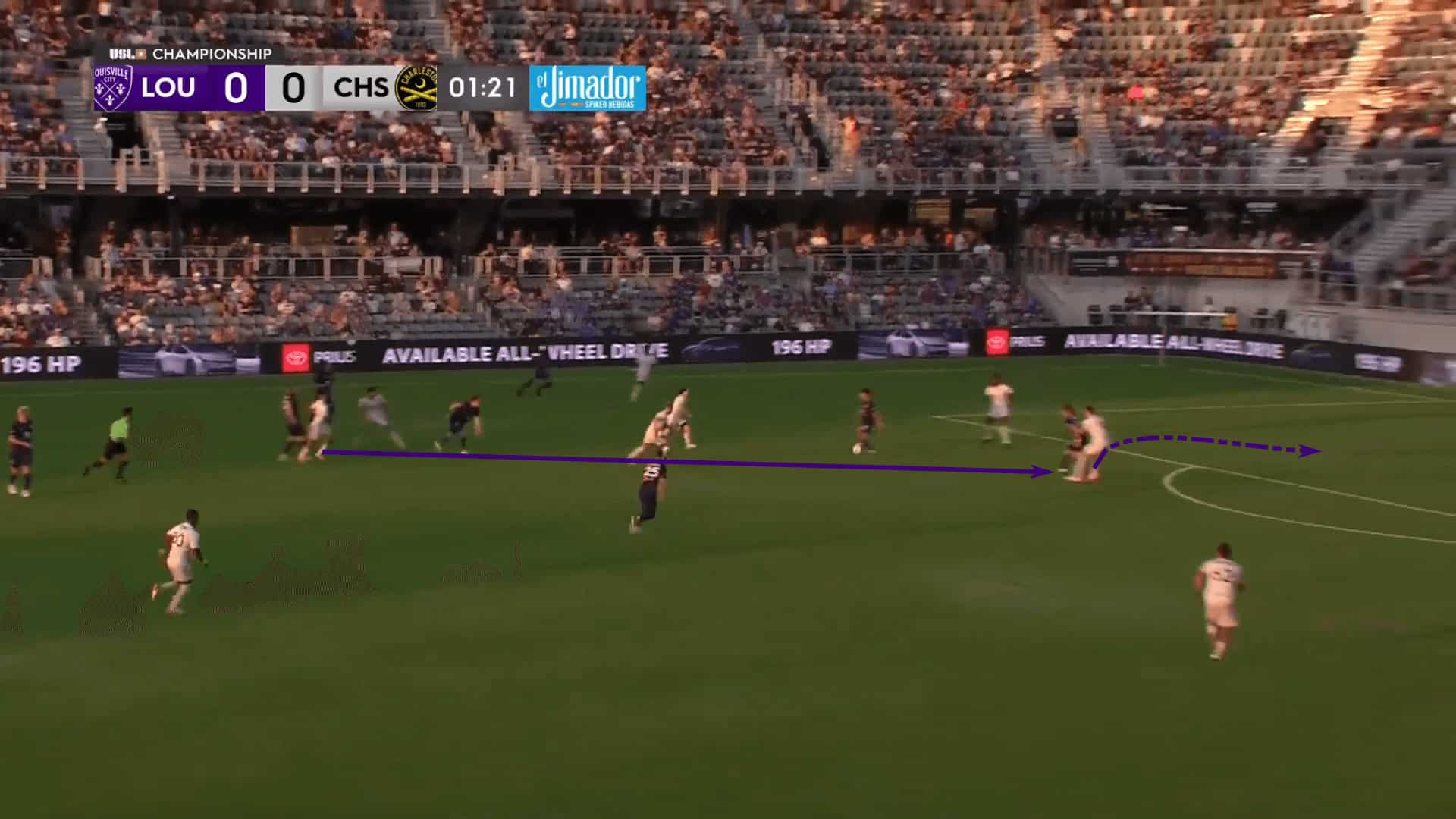
It’s one of many ways they can hurt an opponent.
We’ve already seen the third-man runs and a moment of individual brilliance.
Late in the game against NCFC, it was an up-back-through pattern that got LouCity behind the backline for the go-ahead goal.
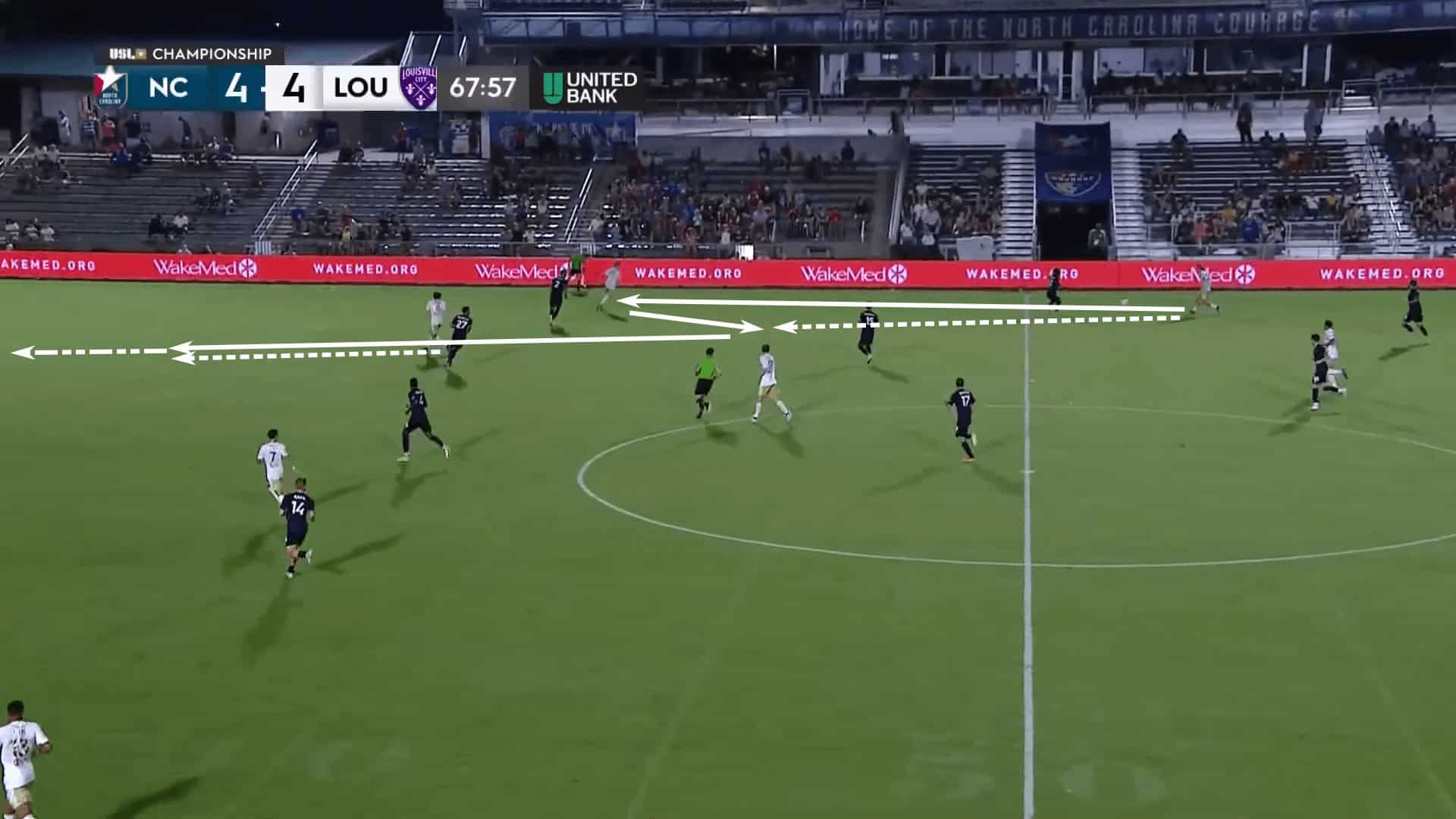
While their highly coordinated verticality is the top threat opponents have to contend with, Louisville City can also find space to play forward using the width of their wide forwards.
While two of the three will often offer straight or more modestly angled diagonal balls forward, the ball-far forward will also drift off of his opponent’s shoulder.
By blindsiding his opponent, he creates the opportunity to play the diagonal ball over the press.
That’s exactly how Louisville got their final goal against Charleston Battery.
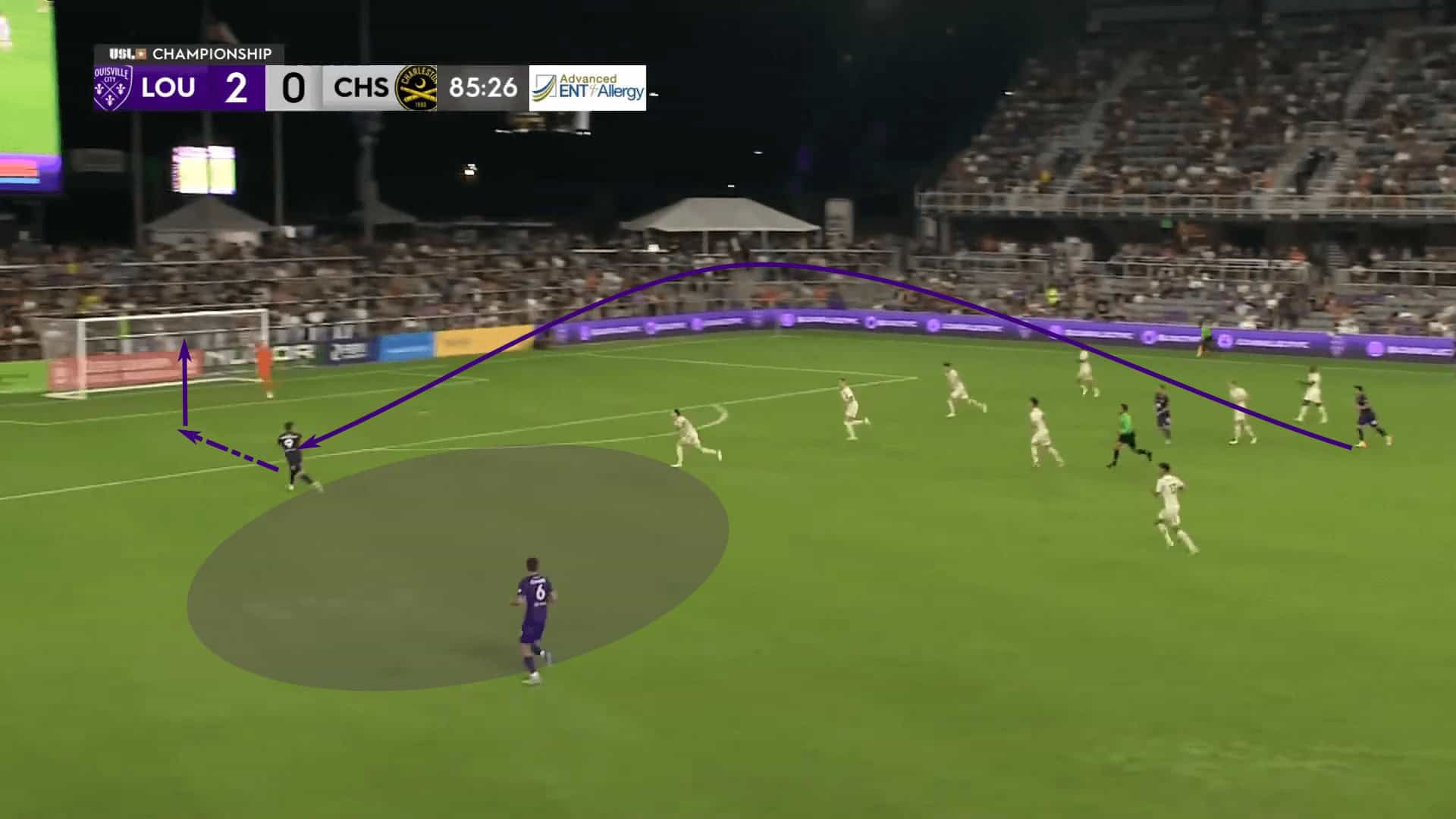
Finally, looking at how the wingbacks factor into the equation, in structured attacks, they will play off of the wide forwards to create overloads in the wings.
Opponent outside-backs are put in a position where they are 2v1 unless they get help from their own wide forwards and attacking midfielders.
The Boys in Purple are especially dangerous in transition, targeting the space behind the opposition’s outside-backs.
With the front three creating that high central overload, the wingbacks often find themselves with unopposed space to attack through the wings, just like this sequence against Charleston.
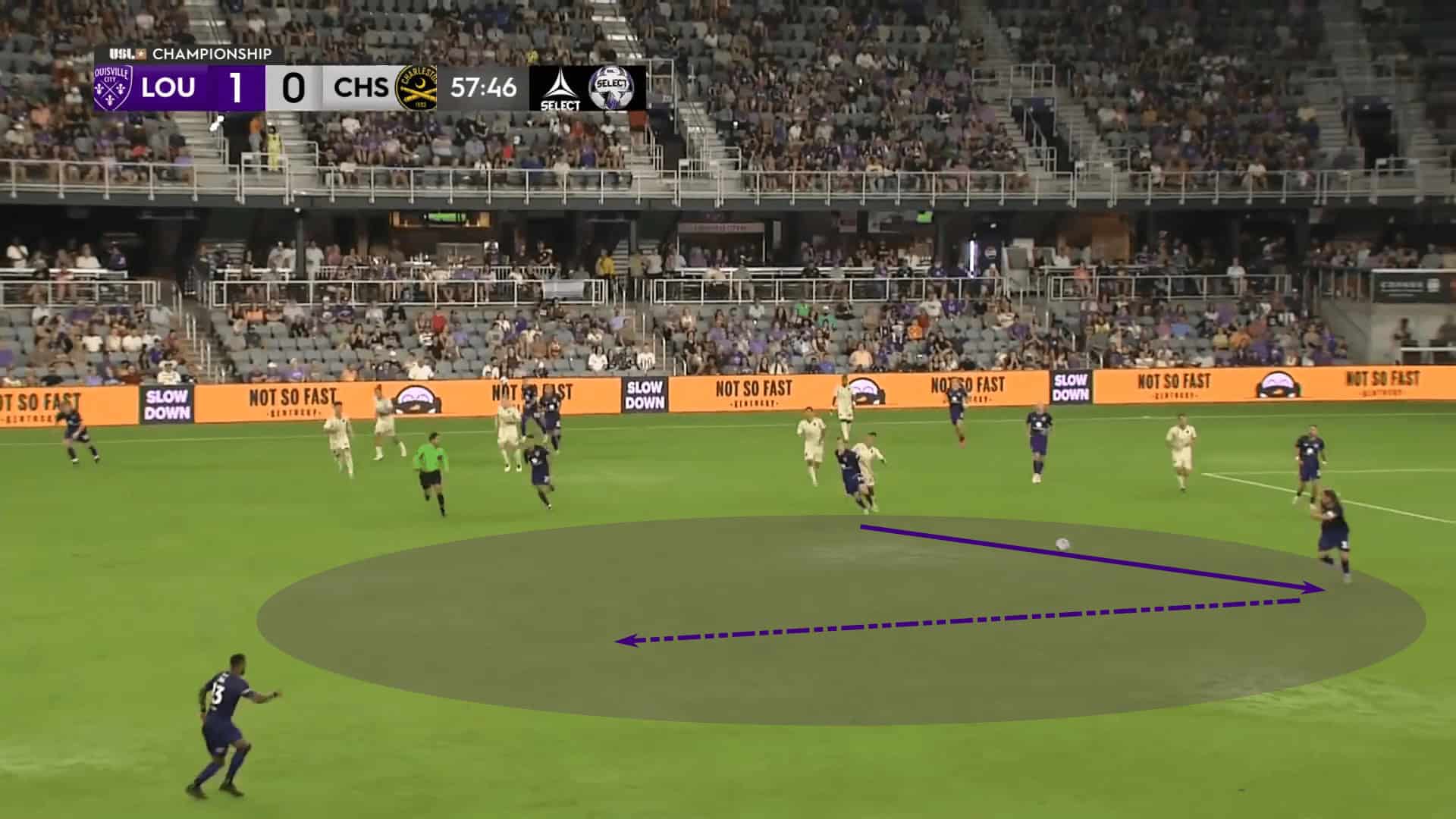
The ball was initially carried forward through the central channel.
That carry committed to Charleston press to the centre, leaving the left-wing unoccupied by the visiting team.
The need to respond to the central threat allowed Louisville City to find their high and wide player, Amadou Dia, on the left.
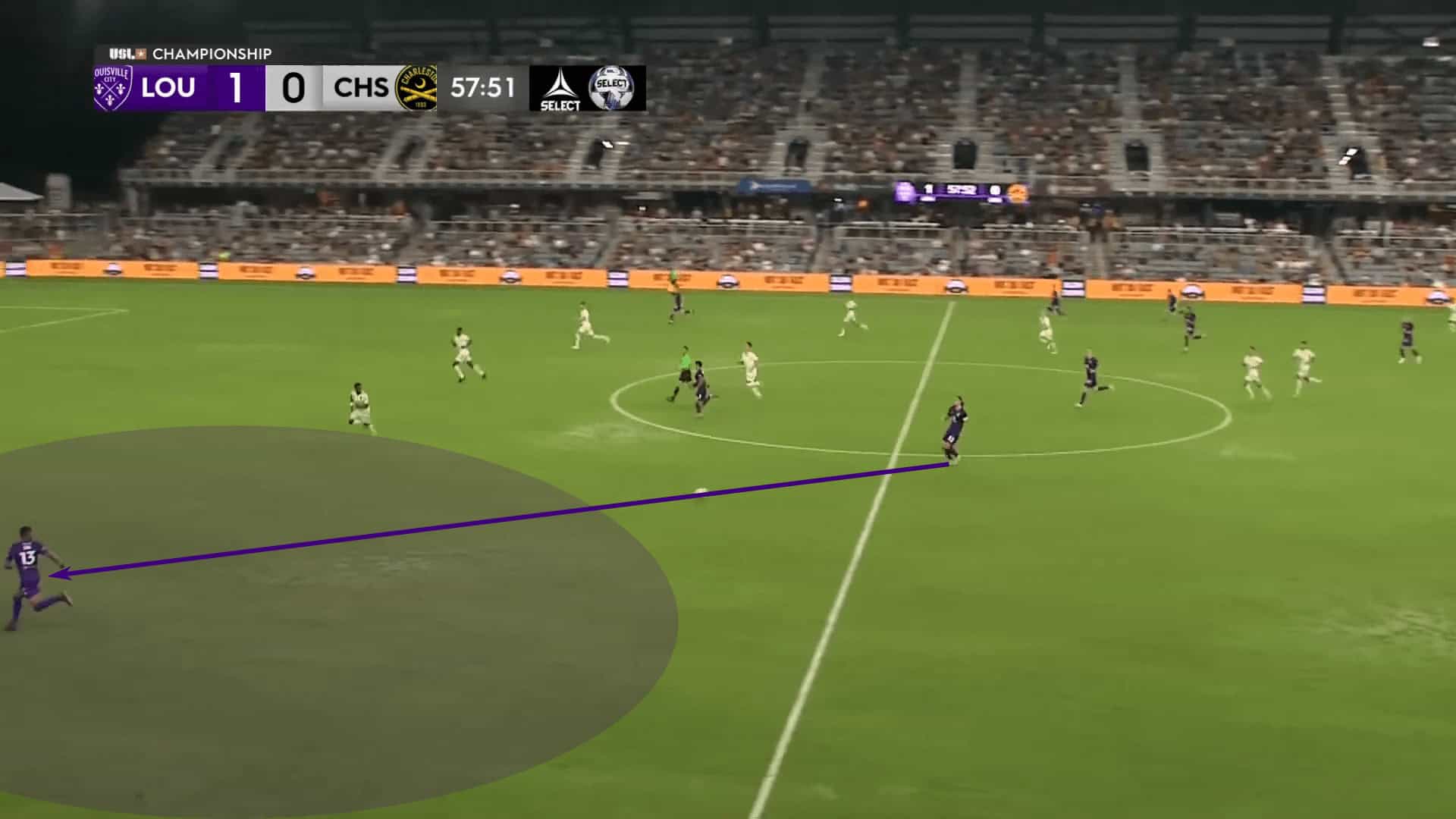
Taking space in the wings allowed Louisville’s remaining attackers to prepare their runs into the box against defenders with split attention.
Cruz’s side is getting goals from all angles.
The forward line has been wildly productive, but even the midfielders have joined the mix thanks to dynamic positional rotations.
Once that forward pass is played, Louisville City gets a lot of numbers forward.
A mixture of forwards attacking the box and late movements up the pitch from the pivots have made Louisville City the most prolific attacking side in the Championship, with 2.55 goals per game.
They’re attacking juggernauts.
Louisville City Dynamic Movements Off The Ball
One thing the side does so well is they keep opponents unbalanced.
Their structure allows them to stay organized in attack and defence, but there’s the added element of how the players connect to disorganize opponents.
Whether focusing on the high or low positional clusters, it’s clear that Cruz’s side has a high level of understanding of how to relate to each other.
There’s a clear sense of the team’s top objectives in the game model and how the players can use their socio-affective superiority to put opponents in difficult situations.
That high central overload is especially problematic for opponents.
Going into matches against Louisville City, opposing coaches know they have to be prepared to deal with runs behind the back line.
The difficulty is that Louisville City’s movement along the forward line and positional rotations make them extremely difficult to track.
Opposing defenders have to be prepared to pass their marks across the backline.
Take this example against NCFC.
As Louisville played through the right wing, their two more central forwards were working in tandem to disorganize the opponent.
The more central of the three forwards wheeled around to the centre of the pitch while the left forward offered a horizontal run across the backline before cutting up the field to collect the through pass in the right half-space.
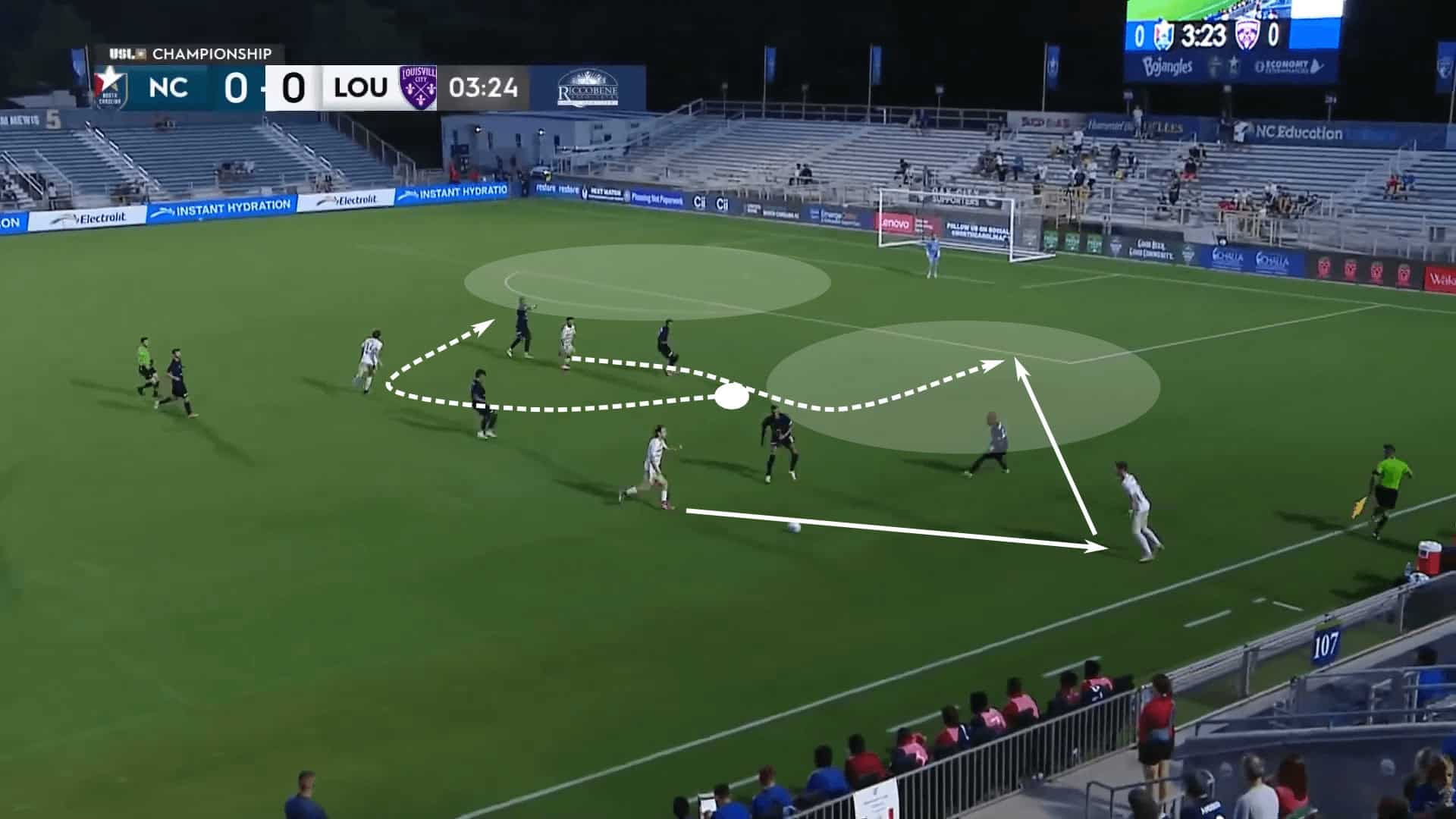
That dynamic positional exchange provided two benefits.
The first is that the left forward’s run came from the blind side of each defender, allowing him to gain valuable yards as he got behind the backline.
The second benefit is the rotation of the third man on the blind side of the backline.
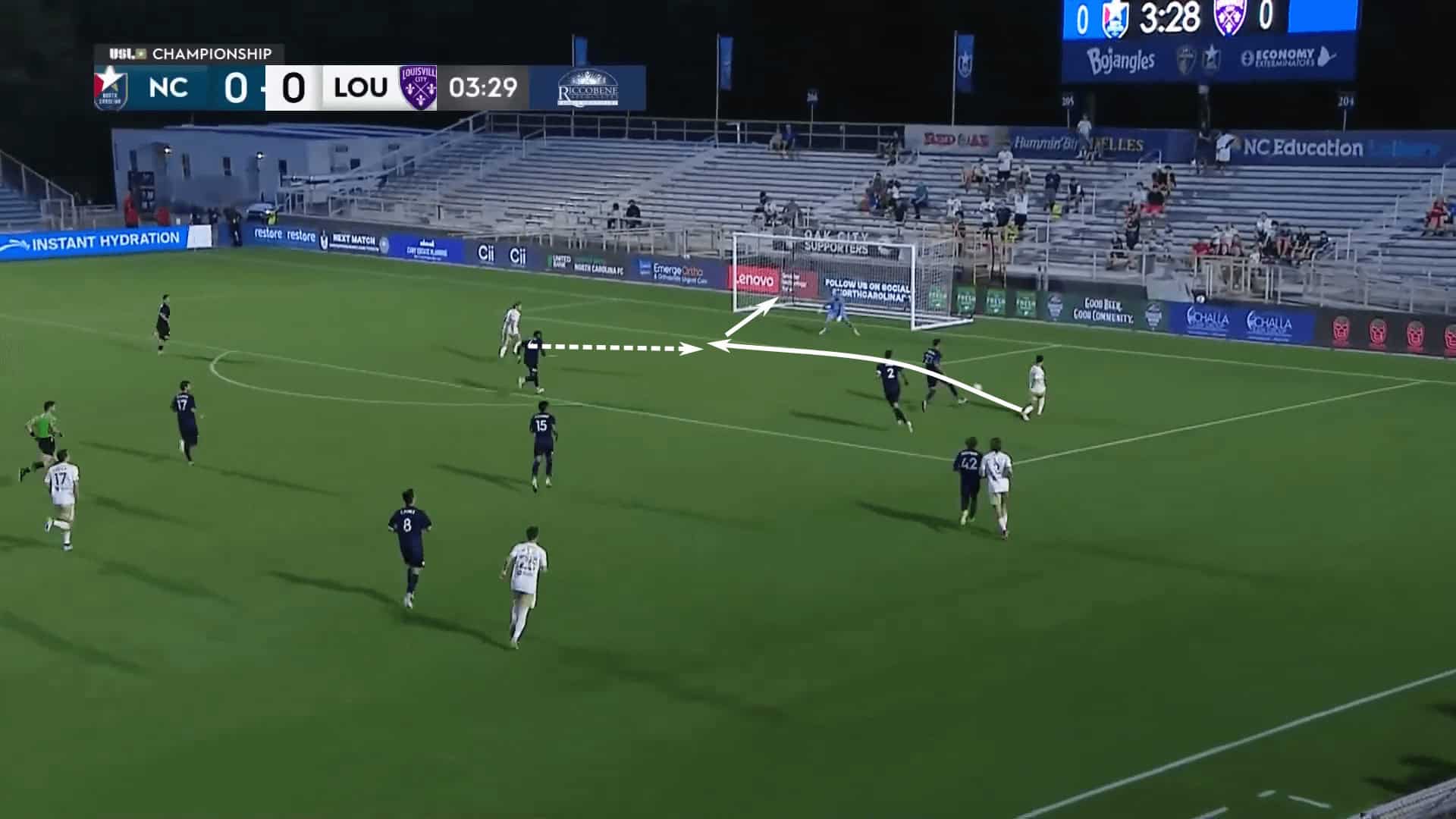
As the ball was played across, the third man was unmarked In prime real estate.
The movement along the forward line and the threat they pose is certainly worthy of the attention we’ve given it thus far.
But that’s not the only threat.
We’ve already mentioned that they spread the goals across the majority of the team.
Harris leads the way with 14, but five players have five goals or more, another three have four goals, and 14 players in total have gotten on the score sheet.
One of the reasons behind the widespread of goals is that player actions are deeply tied to principles of play.
Yes, the forward line is very aggressive attacking space behind the opposition’s backline, but those runs can come from anywhere.
Below, this run from one of the pivots, Elijah Wynder, started deep in the central channel before getting on the ball in the NCFC box.
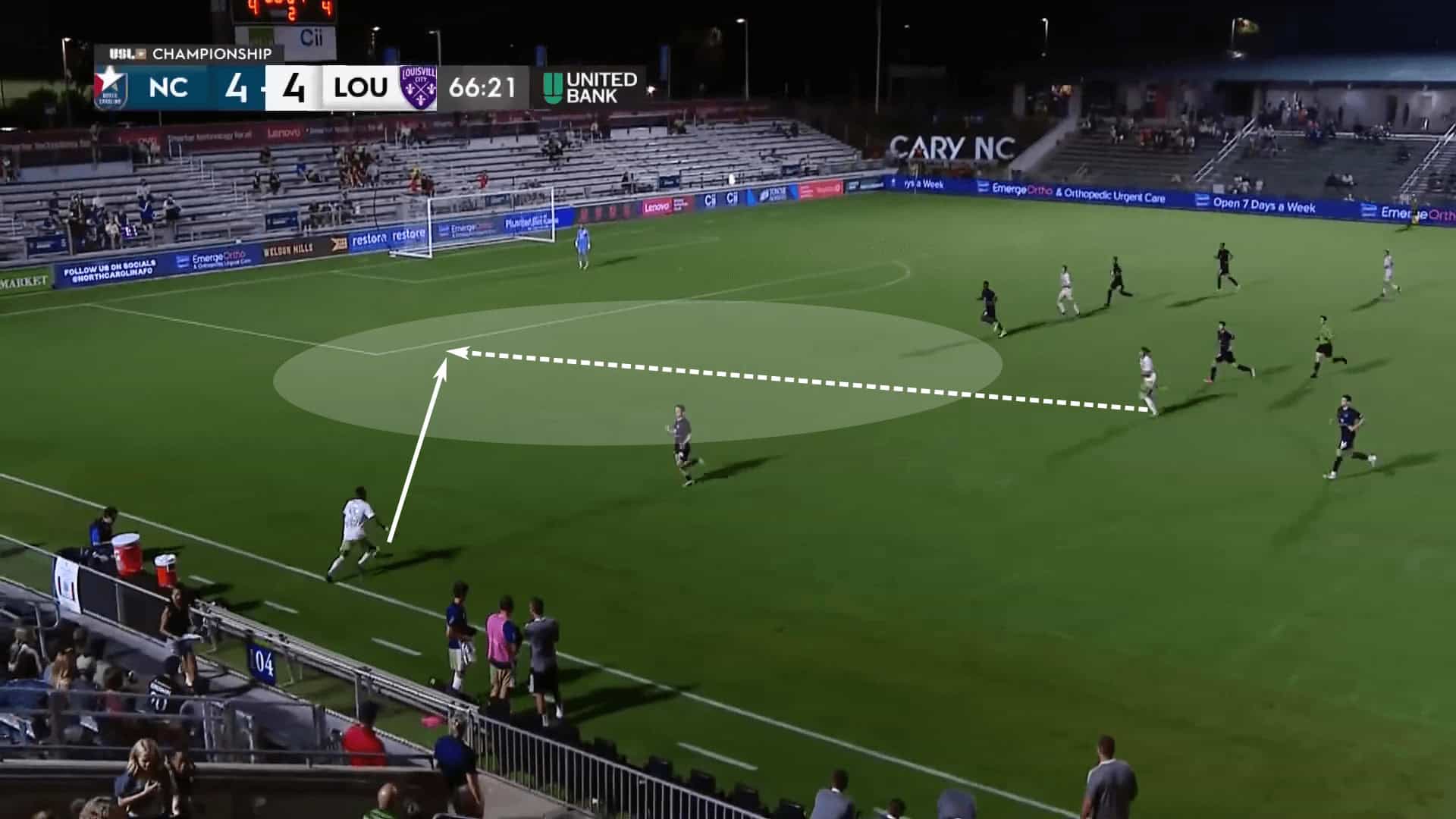
Space was vacant, and a run was needed, so the nearest player took responsibility for attacking that space.
The second goal against Charleston is another timely example.
As Louisville City recovered the ball in their right half space, it was Wilson, playing on the left-wing at that time, who saw his opportunity to attack Charleston’s weak side.
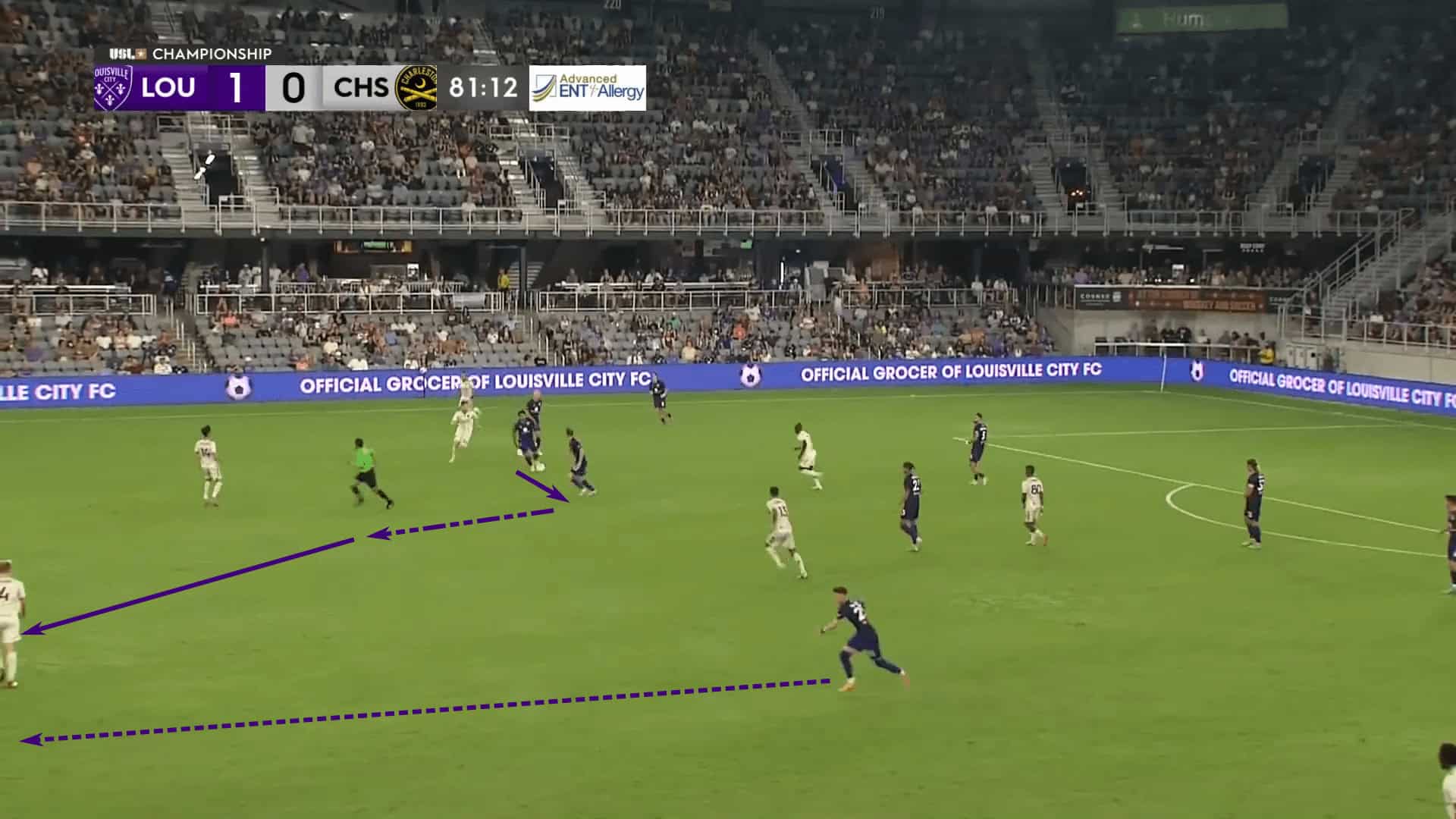
The timing of the pass was perfect.
It played Wilson’s run behind the Battery backline and gave him a massive positional advantage over the nearest defenders.
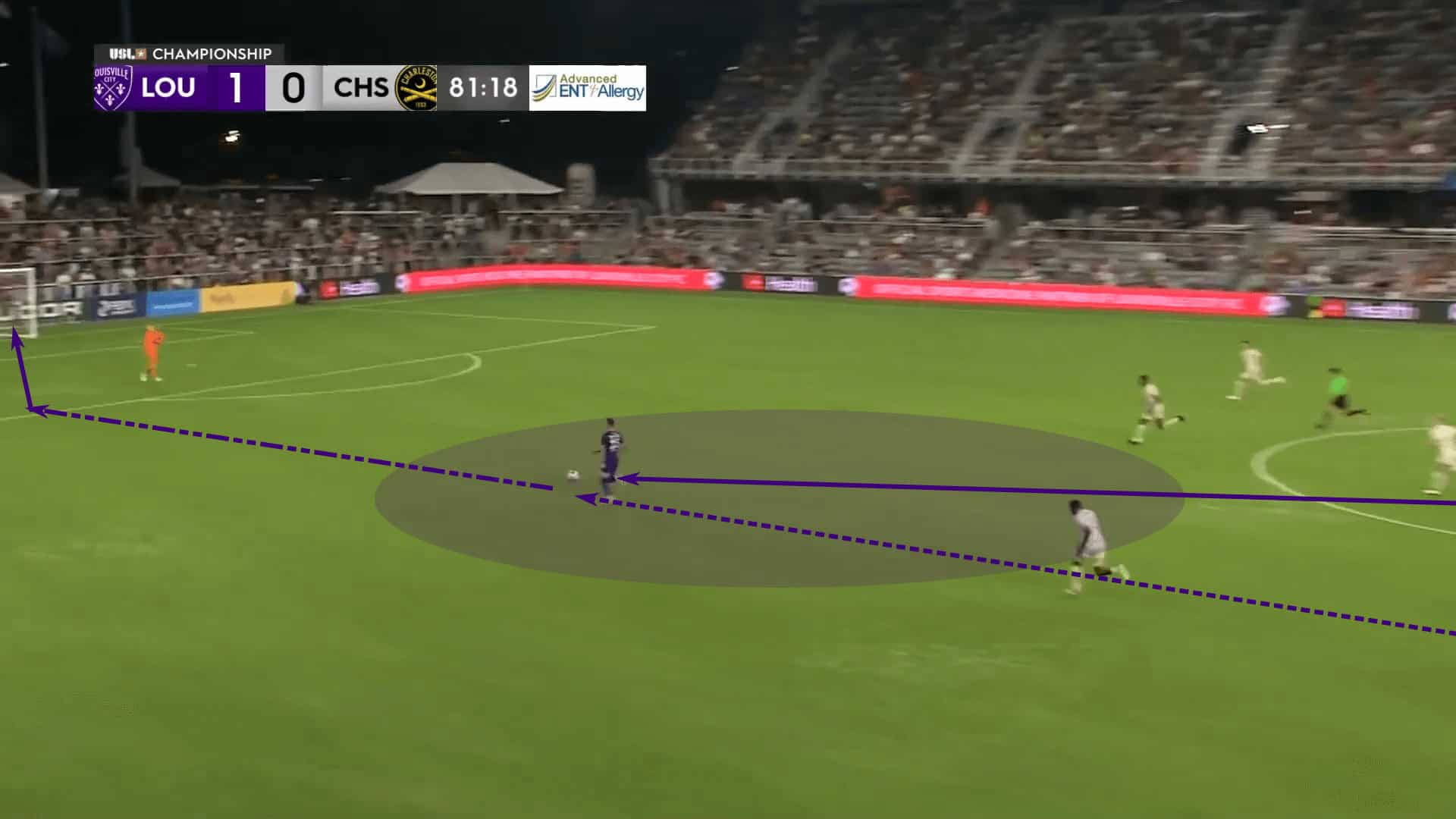
Their movements are in alignment with the principle of verticality.
When there is space to attack, Louisville City is very aggressive in attacking it.
Whether those movements are coming from the front three or from their deeper teammates, this is a team with a clear idea of how they want to play.
The sheer intensity and quality of their movements are difficult for opponents to cope with.
Louisville City Executing The 5-2-3 Press
Turning this analysis towards Louisville city’s defensive tactics, that 3-4-3 can become a 5-2-3 or 5-4-1.
Let’s start with the execution of the 5-2-3.
Starting with the front line, the three forwards remain tightly connected centrally and try to limit opportunities to play through the opponent’s central midfielders.
The two pivots take a man-oriented zonal approach.
If the opposition has three central midfielders, they’ll slide closer to the two nearer to the ball.
While that does leave one midfielder free in this hypothetical scenario, since he is the furthest from the ball, there’s typically time for someone along the backline to step forward and apply pressure.
The two wingbacks will drop and with the backline to give them five, but they have to be prepared to move forward and apply pressure on the opposition outside-backs, especially if the opponent is playing with the back four and push the #2 and #3 up of the pitch.
This is a side that is comfortable in either a high press or a mid block.
When they defend from an opposition goal kick, two of the forwards will apply pressure on the opposition centre-backs and goalkeeper.
At the same time, the third shifts his attention to the deepest of the opponent’s midfielders.
As the opponent progresses up the pitch, one common theme is for Louisville City’s forwards to drop behind the opposition’s pivots.
By keeping those deeper midfielders in front of them, Louisville City will go 3v4 with their frontline, allowing them to stay plus one deeper down the pitch.
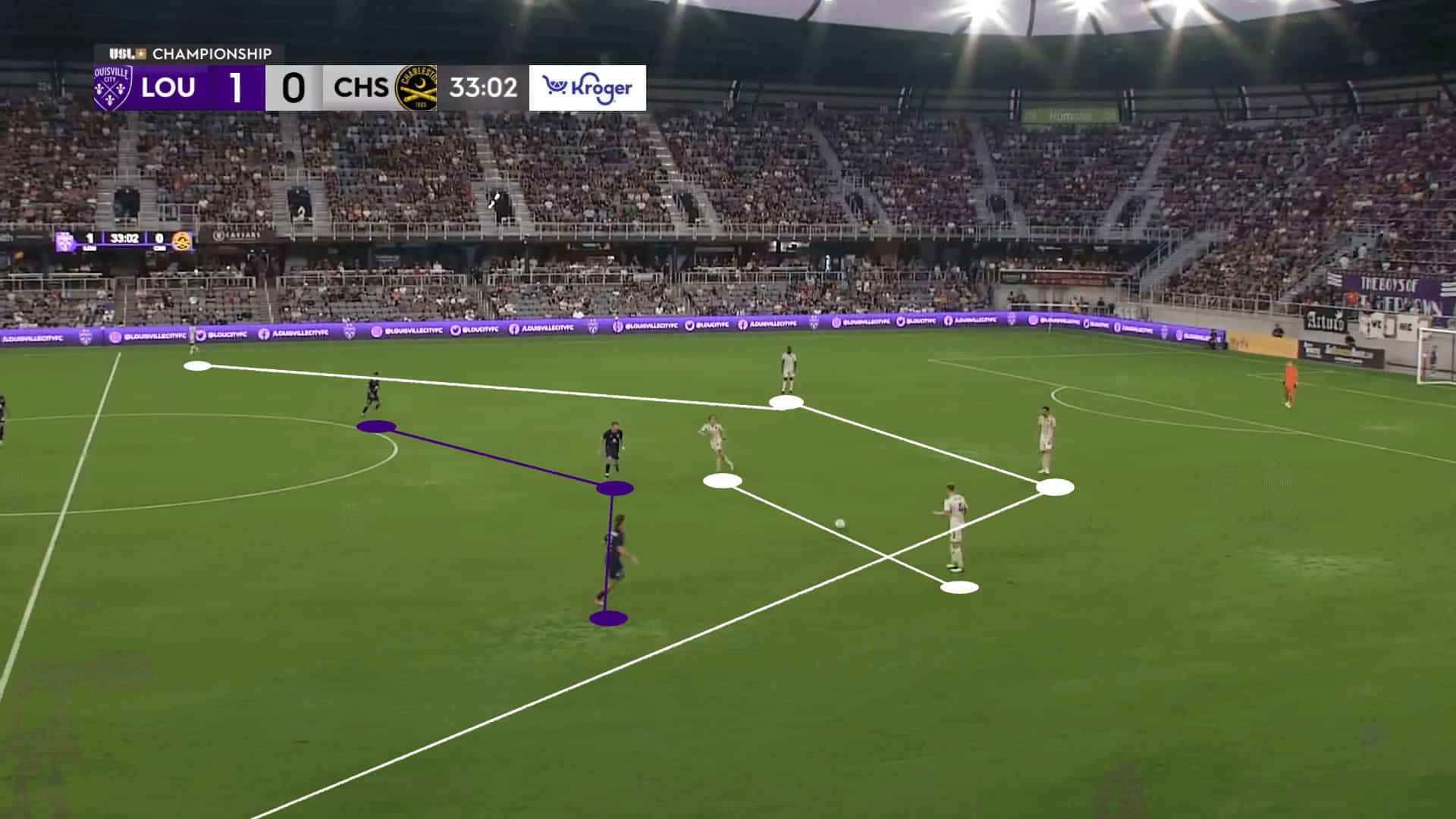
From that 3v4, the forwards will look for pressing triggers.
A negative pass is one of the common cues, especially if it is bounced back from one of the pivots.
In the image below, we see the negative pass trigger the run from Wilson.
As he steps higher up the pitch, that cues one of the Louisville City pivots to step higher.
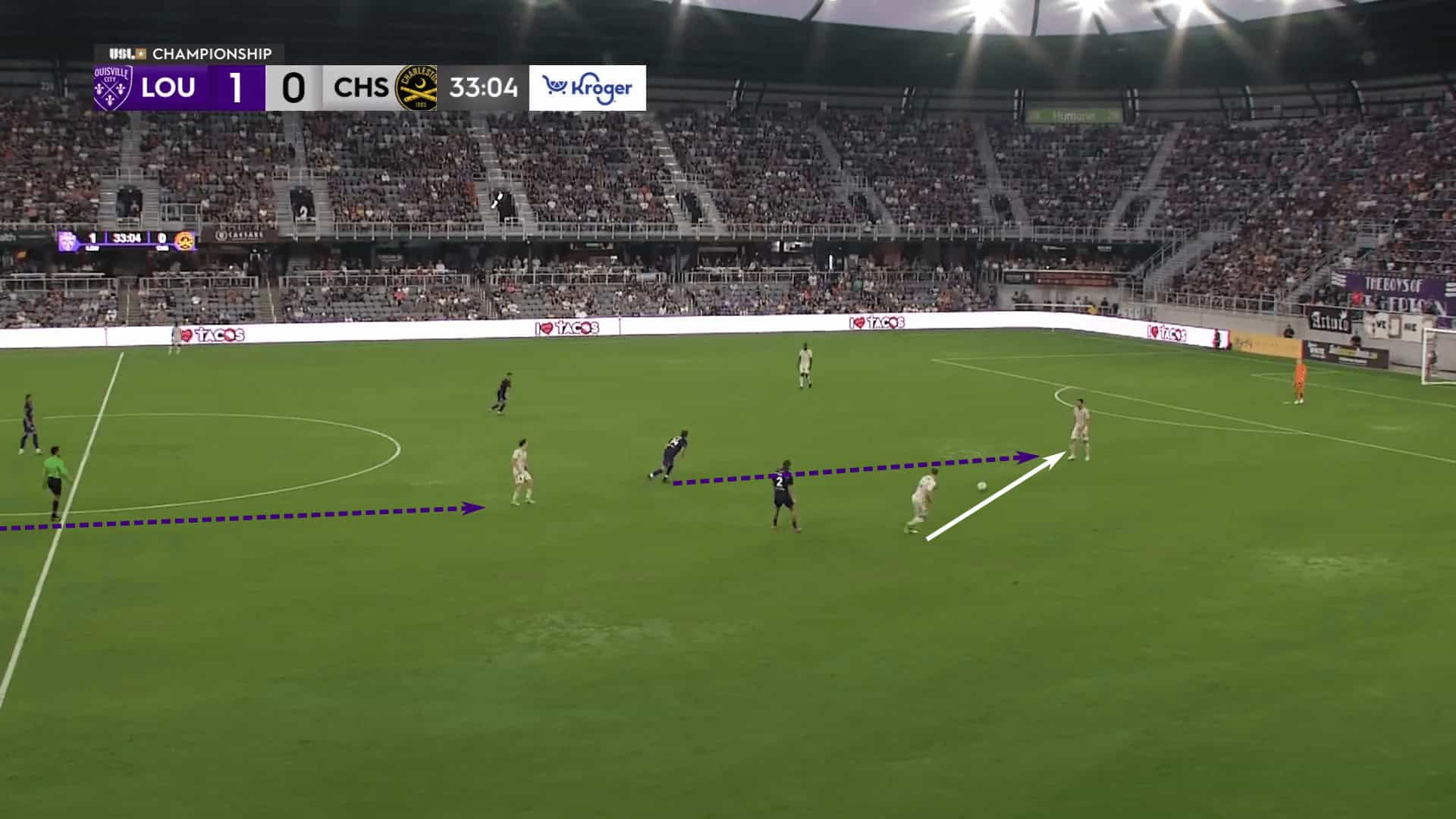
Once the forwards move from containment to pressure on the ball, Louisville City will typically bring an additional pivot forward.
Any additional pass along the backline buys him additional time to step to the free man in midfield.
The goal is to arrive at the moment the ball gets to his opponent.
Immediate pressure is the key.
When Louisville City can’t intercept that pass into the midfielder, the goal is to pursue a recovery through the 4v4.
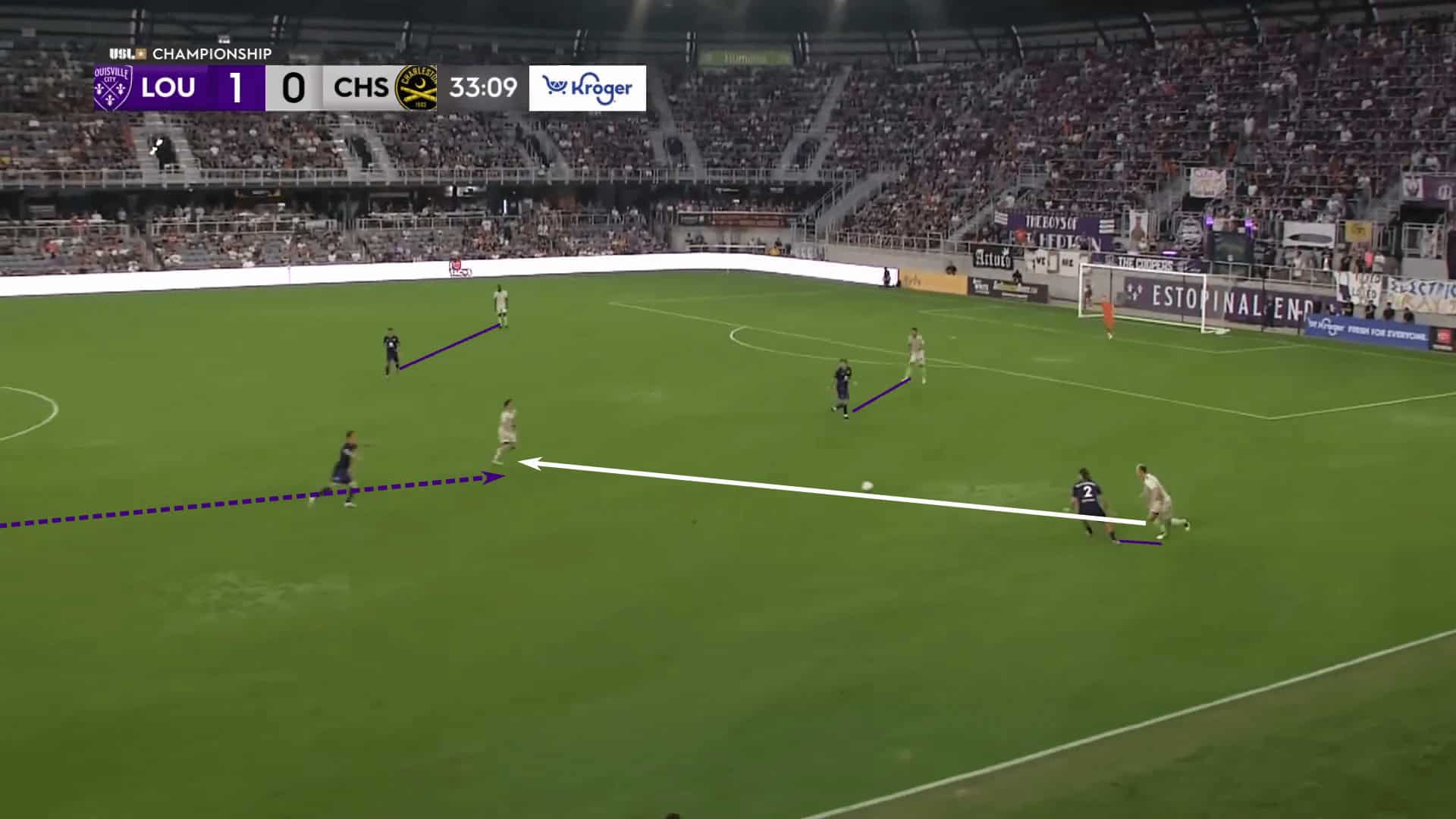
Against Tulsa, we also saw an example of a low block.
With Tulsa in possession near the top of the centre circle, Lou City’s wide forwards dropped in line with the two pivots to give them a 5-4-1.
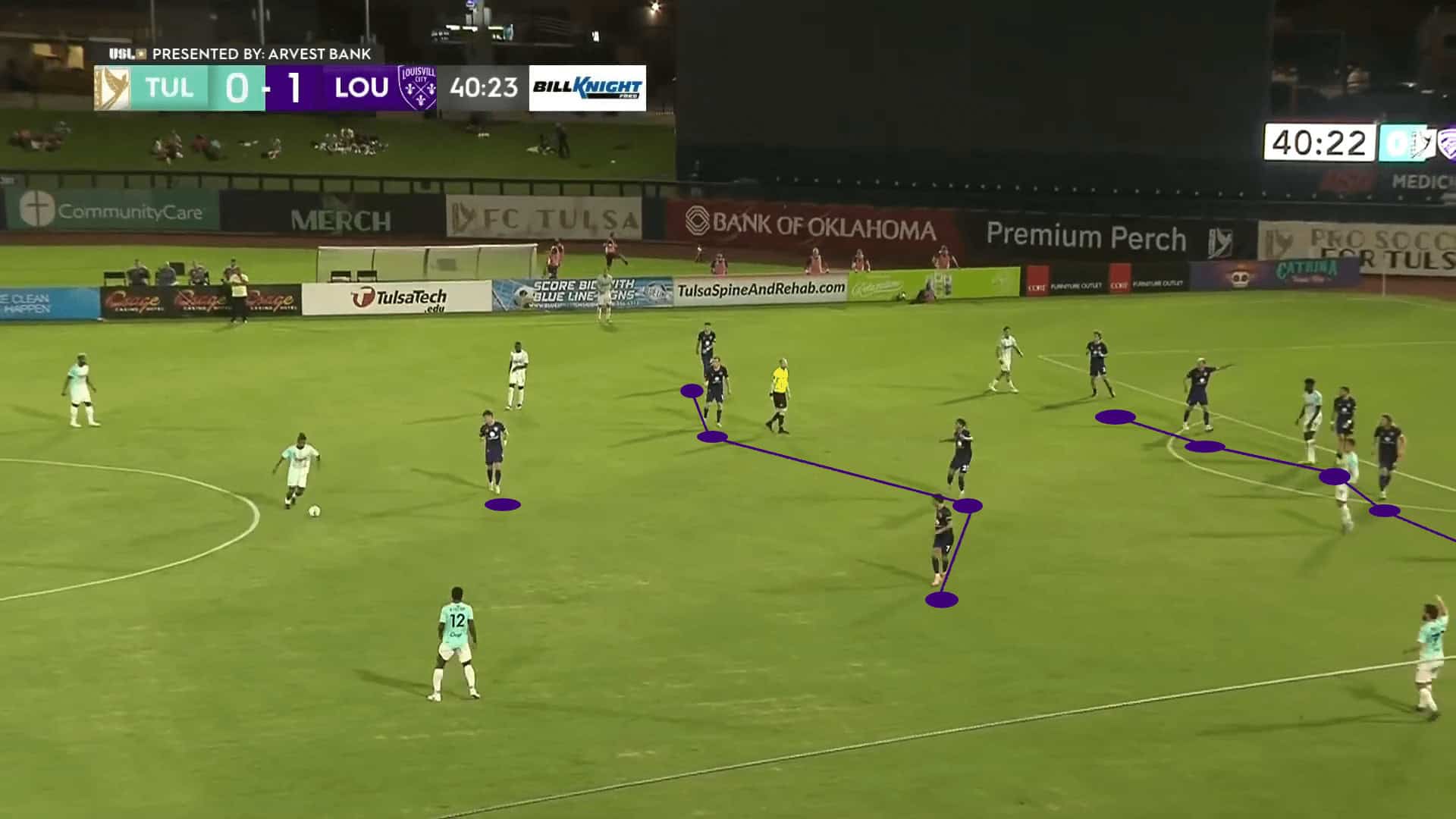
With numbers behind the ball and the centre heavily occupied, Tulsa’s path forward forced them to play around the press.
At the beginning of the section, we mentioned their defensive tactics were designed to use a man-oriented zonal press in midfield to mark the two ball-near midfielders out of the game.
This final example against NCFC gives a nice visual of the corresponding movements.
As the North Carolina side found the free player in midfield, the left centre-back Kyle Adamsho stepped forward to apply pressure.
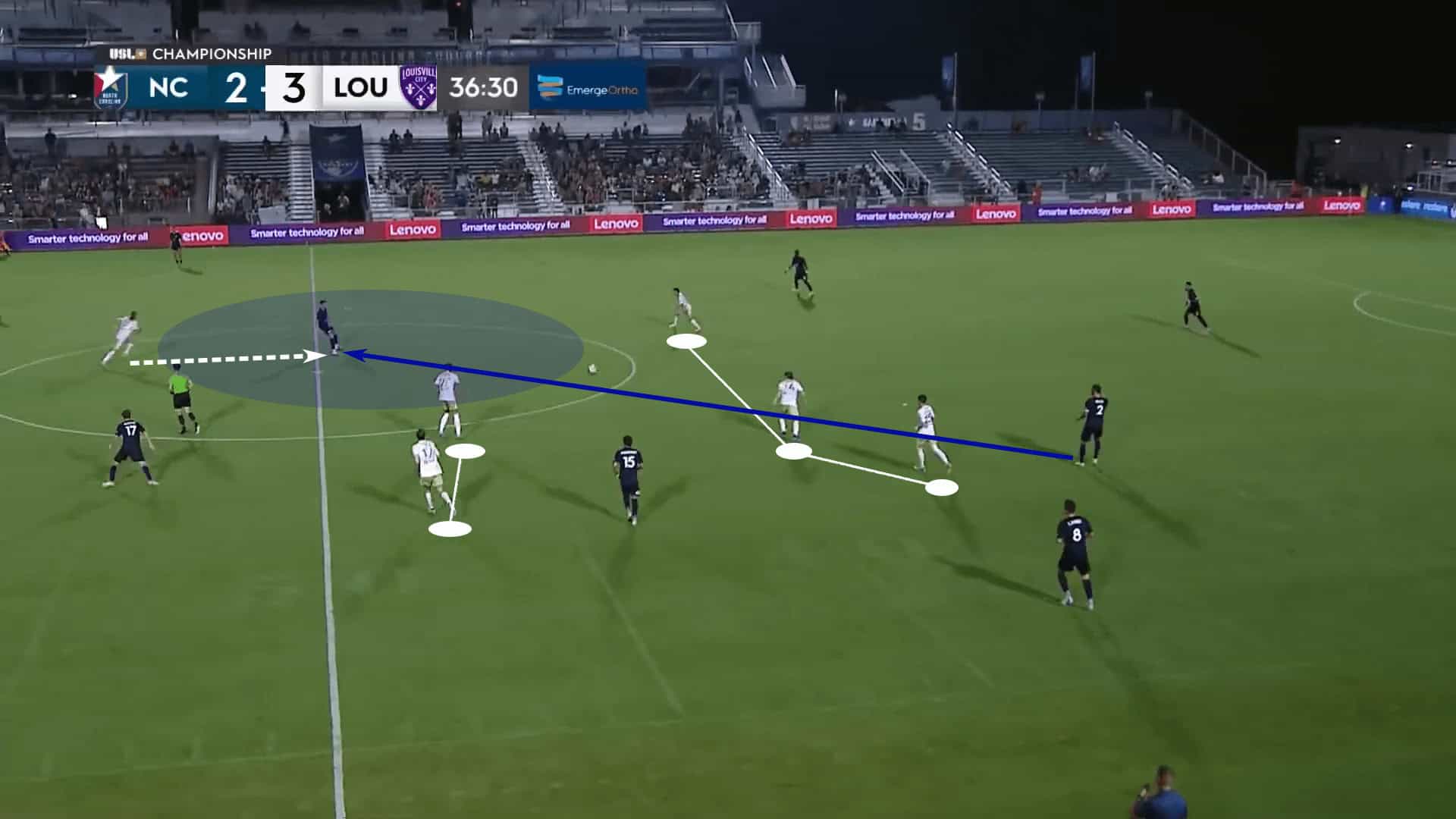
His heavy pressure on the ball forced a hopeful, lofted, bent ball forward that Louisville City eventually won.
The work of the front three, the organization of the two pivots and the depth of the backline worked in harmony to negate NCFC’s path forward.
Conclusion
If there’s one area that we haven’t mentioned in this tactical analysis that’s worth mentioning, it’s Louisville City’s dominance on set pieces.
They are the league leaders in goals from set pieces, with 10 coming from corners.
We mentioned how they’ve managed to spread the scoring to 14 players during the 2024 campaign.
Those who set these goals are a significant factor.
While the four goals allowed against NCFC dropped the side’s defensive performances to eighth out of 24 USL Championship squads, this is a side with the confidence that they can always outscore an opponent.
Even on a day with a poor defensive performance, they know they can get to a high-scoring affair and come in out on the right end of the result.
Danny Cruz, who also played for FK Bodø/Glimt before the famed matchup against Serie A’s Roma and José Mourinho, has got this side peeking as the postseason draws near.
With eight wins in their last ten games, Louisville City is after that #1 seed in the playoffs.
Much like their vertical tactics, they’ve attacked the top of the table and show no signs of slowing.





Comments